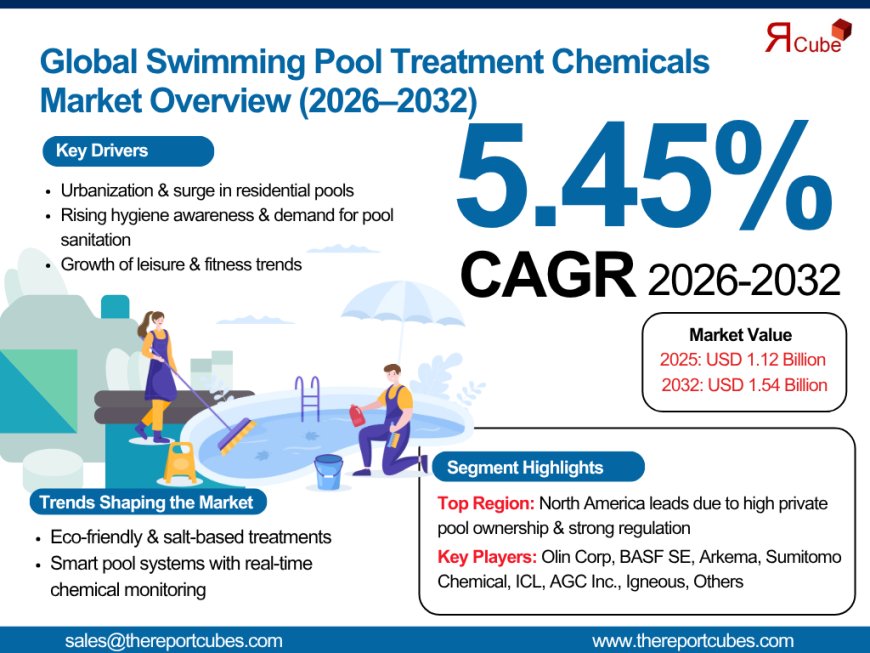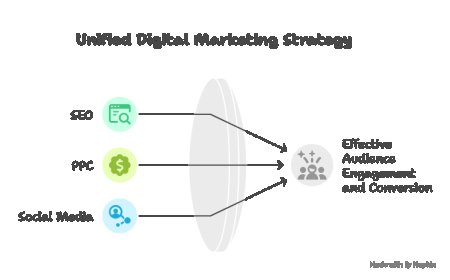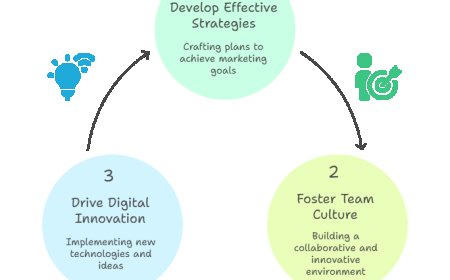Chlorine, Algaecides & More: A Deep Dive into the Pool Chemicals Market
The Global Swimming Pool Treatment Chemicals Market is anticipated to register a CAGR of around 5.45% during the forecast period, 2026-32. Also, the market size was valued at nearly USD 1.12 billion in 2025 and is foreseen to witness nearly USD 1.54 billion during 2032.

Introduction
Maintaining a clean and safe swimming pool requires the right balance of chemicals to ensure water hygiene, clarity, and longevity. Theglobal swimming pool treatment chemicals marketplays a crucial role in providing these essential solutions, catering to residential, commercial, and industrial pool owners.
According toThe Report Cubes,theglobal swimming pool treatment chemicals marketwas valued atUSD 1.12 billion in 2025and is projected to reachUSD 1.54 billion by 2032, growing at aCAGR of 5.45%from 2026 to 2032. This growth is driven by increasing awareness of waterborne diseases, rising demand for private pools, and advancements in pool maintenance technologies.
While this article focuses onswimming pool treatment chemicals, if you're interested in another trending topicInstant Tea Premixstay tuned for insights on that as well!
Key Chemicals Used in Swimming Pool Treatment
Swimming pool treatment chemicals are categorized based on their functions:
1. Disinfectants (Sanitizers)
- Chlorine-Based Compounds (Sodium Hypochlorite, Calcium Hypochlorite, Trichloroisocyanuric Acid): Most widely used for killing bacteria and algae.
- Bromine: An alternative to chlorine, especially in indoor pools.
- UV & Ozone Treatment: Emerging as eco-friendly disinfection methods.
2. pH Balancers
- pH Increasers (Sodium Carbonate): Raise low pH levels.
- pH Reducers (Sodium Bisulfate, Muriatic Acid): Lower high pH levels.
3. Algaecides
Prevent and eliminate algae growth, ensuring clear water.
4. Shock Treatments
Used for rapid chlorine boost to eliminate contaminants.
5. Clarifiers & Flocculants
Improve water clarity by removing tiny particles.
Market Growth Drivers
1. Rising Demand for Residential & Commercial Pools
With increasing disposable income, more homeowners are installing private pools. Additionally, hotels, resorts, and water parks are expanding, boosting demand for pool chemicals.
2. Health & Hygiene Awareness
Growing concerns about waterborne diseases (e.g., Legionnaires' disease) are pushing pool owners to invest in proper water treatment.
3. Innovations in Eco-Friendly Chemicals
Manufacturers are developingchlorine-free and non-toxic alternativesto meet environmental regulations.
4. Government Regulations on Water Safety
Strict guidelines from organizations like theEPA and WHOmandate proper pool sanitation, driving market growth.
Regional Market Insights
- North America: Dominates the market due to high pool ownership and strict water safety norms.
- Europe: Growth is driven by luxury resorts and public swimming facilities.
- Asia-Pacific: Fastest-growing region due to urbanization and increasing tourism.
- Middle East & Africa: Demand is rising with the expansion of luxury hotels and water parks.
Challenges in the Market
- Health Risks from Over-Chlorination: Excessive chlorine can cause skin irritation and respiratory issues.
- Environmental Concerns: Chlorine byproducts can harm aquatic life.
- Fluctuating Raw Material Prices: Affects production costs and pricing strategies.
Future Trends
- Smart Pool Monitoring Systems: IoT-based sensors for real-time chemical balance tracking.
- Sustainable Pool Solutions: More biodegradable and non-toxic chemical alternatives.
- Automated Dosing Systems: Reducing manual chemical handling for safety and efficiency.
Conclusion
Theswimming pool treatment chemicals marketis set for steady growth, fueled by rising pool ownership, health awareness, and technological advancements. With a projectedCAGR of 5.45%, the industry is evolving towardeco-friendly and automated solutions, ensuring safer and cleaner swimming experiences.






















